NILI – an acronym for the biblical Hebrew phrase, Netzakh Yisrael Lo Yeshaker, meaning ‘The Eternal One of Israel will not Lie’ – was the World War One Jewish spy network in Palestine. In this fascinating study, Efraim Halevy, the former head of Mossad, argues that both the victory of the British Army led by General Allenby and the Balfour Declaration itself were in good measure the result of the first successful foray of the Jewish people into modern international intelligence-gathering and espionage.
In May 1916, London and Paris reached a secret agreement on the future of the region which later came to be known as the Sykes-Picot Agreement, named after the two officials who negotiated it. The cause of the Jewish people was absent from that document, even though by that time the World Zionist Organisation led by Dr Chaim Weizmann (who was then living in Manchester) was feverishly trying to get the British government to recognise the interests of the Jews in their historic birthplace from which they had been exiled almost two thousand years before. Weizmann, himself a brilliant Doctor of Biochemistry, was already making a significant contribution to the British war effort by successfully developing a germ that would be key in producing acetone, which was a vital component facilitating the production of explosives. He served in a senior position in the laboratories of the British Admiralty and devoted enormous time and energy in lobbying senior British political figures to meet the desires and rights of the Jewish people in any post-war construction of future Palestine. Yet without in any way detracting from Weizmann’s unique contribution to the war effort and to the network of contacts he created in London to further the political aims of the Zionist movement, it was beyond his capacity to influence events on the ground in Palestine during this critical war period.
Already by mid-1915, the British and French were conspiring to divide the territorial spoils that might fall into their hands should they win the war, and were simultaneously negotiating with various Arab and Muslim leaders in the Arabian peninsula and promising them heaven and earth if they were to help overthrow the Ottoman rule that presided over the entire ‘Middle East’. However, the complex situation in Palestine in the midst of World War One by no means pointed to an all-out victory for the Allies.
The Turks / Ottomans who still ruled over much of the region – long described by the British and French as ‘the sick man of Europe’ – had not given up the fight. Djemal Pasha, the Ottoman Viceroy residing in Damascus, ruled over the entire area from Syria to the Arabian Peninsula, and was not indifferent to the activities of the approximately 50,000 Jews living in Palestine. Professor Amnon Cohen, an Israel Prize laureate and the leading Israeli authority on the Ottoman period, argues that Pasha paid special attention to three potentially subversive threats in the region, namely, the Christian religious community in Lebanon, Muslim irredentist players, and the Zionist faction in Palestine. The Pasha made it crystal clear to all that the Ottoman Empire was allied to Germany and was determined to win the war. The Turks also forcibly recruited many young Jews into the army.[1]
Intelligence in World War One
Jewish patriots joined the armed forces of Britain, France and Germany and saw combat on both sides of the divide. There was no Jewish international unity in World War One – contrary to what emerged in World War Two. The Jewish ‘issue’ and its resolution seemed almost absent from the international agenda.
From the outset of World War One intelligence-gathering became critically important to all sides. The Ottoman Empire naturally had in place a vast system of control over potentially disloyal elements within the territories under its rule. London and Paris were jockeying to succeed Istanbul and its ally Berlin, whose basic goal was to ensure its interests the strategic south-eastern flank under Ottoman rule. On the other side of the divide Britain and France, and later the US, sought to cultivate support within areas under Ottoman control in anticipation of the ultimate fall of the Empire at the end of the war.
What was required was reliable military information concerning the Ottomans and their allies, detailed local knowledge of the areas under Ottoman rule, a list of high-level contacts with local players (such as Princes, Sheiks, Tribes etc.), and an intimate understanding of the conflicting interests between them. It also required identifying local players with combat capabilities and the provision of on-the-spot strategic and military guidance for them. All of this could only be handled by intelligence services and seasoned intelligence officers with experience in the field.
The most prominent was T.E. Lawrence from Great Britain – ‘Lawrence of Arabia’. But he was not alone; there was Curt Prufer from Berlin, who rose to prominence in World War One and spent part of his time in Jerusalem and who was active on many fronts; and there was William Yale from the Standard Oil Company of New York, who doubled up as an intelligence officer. There was also Edouard Bremond of France, who primarily operated in the Arabian Peninsula.
These figures, together with Djemal Pasha, provide the backbone of a 2010 book titled Lawrence in Arabia by Scott Anderson. In a riveting five hundred pages, Anderson places intelligence, in all its facets, centre stage. Anderson also included in this short list one more name, Aaron Aaronsohn, who played a crucial role in determining the results of World War One in the Middle East as the architect of the Jewish spy network, NILI.
The Origins of NILI
The vast majority of the Jewish community in Palestine was determined not to confront the powers that be, let alone to play any role in bringing down the Ottoman Empire. Indeed, this approach made possible a relatively friendly liaison between the German Airforce and the Jews during the war. Five German light aircraft squadrons operated from a number of strips from Beersheva to the Jezreel valley and even further north. Towards the end of the First World War – as the Turks were being pushed out of Palestine, Lebanon and Syria – the last remaining squadron moved its command post to Kibbutz Degania, the first Kibbutz to be established in Palestine.[2] Ultimately, the Jewish community lacked any strong and courageous leadership, and it was left to individuals to assume responsibility at high personal risk for determining a course of action that would lead to a total change in the fortunes of the war in the Middle East.
Enter a small group of fearless youngsters in their 20s and a leader who came forward to take command and control of one of the most dangerous intelligence operations in the history of the Jewish people. First among them was Aaron Aaronsohn, an agronomist who had established a research station at the coastal spot of Atlit, near the village of Zichron Yaakov, and who had previously played a major role in overcoming a plague of locusts that descended on large tracts of land in Palestine, Lebanon and Syria. In fact, after meeting him in the Ottoman headquarters in Damascus in 1915, Djemal Pasha appointed Aaronsohn to the post of overall supervisor of the anti-locust campaign. Aaronsohn and Avshalom Feinberg, his assistant in his research station, created a close-knit intelligence gathering group called NILI, an acronym for the biblical Hebrew phrase, Netzakh Yisrael Lo Yeshaker, meaning ‘The Eternal One of Israel will not Lie’. Coming from 30 families at most in the Hadera/Zichron Yaakov area and the village of Rishon LeTzion, NILI provided invaluable tactical and strategic information to those British forces based in Cairo who were planning to launch a military campaign to push the Ottoman Army northwards to the Syrian-Turkish border. This campaign was to materialise only two years later.
What were Aaronsohn and his team out to achieve? They believed that they could play a decisive role in freeing Palestine from the Ottoman yoke and facilitating a British military victory. They entertained high hopes that in the event of a British victory over the Ottoman Empire in the Holy Land, the Jewish people might be rewarded for their contribution to the victory in the form of Jewish self-rule or even independence.
In taking their fateful decision to launch a secret operation to gather military and strategic information on Ottoman rule in Palestine, NILI understood that they were engaged in a Herculean effort to reverse the state of play in the Middle East arena in wartime, and to translate success into a strategic opportunity. They must have also understood that they were placing the entire Jewish population in Palestine in physical jeopardy. During the war, beginning in 1915, the Ottomans killed over a million citizens of Armenian extraction living under their rule. The magnitude of that military operation, and the ferocity with which it was carried out, must have chilled the nerves of the approximately 50,000 Jews residing in the Holy Land.
Indeed as the operations of NILI became known, they were treated by many Jews as ‘outcasts’ and for years were labeled as ‘porshim’ – people who had left the fold and who had irresponsibly risked the lives of the entire Jewish community in the Holy Land. They were virtually boycotted by the majority of Palestinian Jews for many years after the war and at best have been treated as no more than a footnote to history.
However, NILI not only provided tactical data but also obtained strategically important information and passed it to the political echelons in Whitehall. They gleaned this information from physical observation and from data supplied by human sources who had infiltrated into the Ottoman Army. Their intelligence – as it came from highly motivated Jewish youngsters – was considered far more reliable than if it had arrived via randomly recruited local low-level Arab sources.
Aaron Aaronsohn
The personality of Aaronsohn was at once captivating and, for some, objectionable. He did not confine himself to running the operation from his research station, but also visited Cairo from time to time and became widely known to all the senior echelons of the British ‘Eastern Mediterranean Special Intelligence Bureau’ (EMSIB). He was a prolific writer on agronomic and related subjects and one of his papers, describing the economy of Palestine, formed the basis of an authoritative document that was widely distributed to British officers. He travelled to Europe and met Baron Rothschild in Paris and William Yale, the American Intelligence officer. In Cairo he befriended both Sir Mark Sykes and William Ormsby Gore, both young British members of Parliament then seconded to Cairo to work with senior officers in intelligence and top level commanders of the British forces in the Middle East, and who were later to play major roles in the issuance of the Balfour Declaration. Both developed a profound impression of Aaronsohn and his abilities.
Aaronsohn did not consider himself beholden or subordinate to the leadership of the international Zionist movement led by Weizmann. Initially he utterly rejected the efforts of the latter to bring him and NILI under the umbrella of the Zionist leadership and rejected demands levelled at him to toe the official line. This was especially significant when he met Lawrence and contradicted the line of Arab-Jewish coexistence in future Palestine less than half a year before the Balfour Declaration, telling Lawrence in no uncertain terms that the Jewish and Arab styles of life were virtually incompatible. Lawrence retorted by saying the Jews had only two choices – ‘either coexist or see their throats cut’. In retrospect, the stormy meeting with Aaronsohn had no adverse effect on Lawrence’s support for the Zionist cause. At the 1922 Cairo Conference, Lawrence – who was then an advisor to the Secretary of the Colonies, Winston Churchill – was active in ensuring that the crowning of Abdullah as ruler of Trans-Jordan was conditional on his acceptance of a Jewish national home within western Palestine.[3] To this end, Lawrence secured a pledge from Abdullah’s brother Faisal that ‘all necessary measures’ would be taken ‘to encourage and stimulate immigration of Jews into Palestine on a large scale’. Lawrence advised Churchill that the Balfour Declaration of 1917 was compatible with commitments made to Arab leaders at the time.
When Weizmann expressed fear that Aaronsohn might wreck the effort to get the Balfour Declaration approved, Aaronsohn countered by threatening to disband NILI. After messages he sent to Weizmann to the effect were made known to British officers in Cairo they rushed to ask London to calm him.
That Aaronsohn was a stormy petrel was not in doubt; that he was considered indispensable was no less true. Ultimately, NILI evolved into an intelligence service bereft of a country or a political master.
NILI’s influence on the British war effort
The NILI operation was relatively short-lived. Yet between the years 1915-1917, until they were exposed, they were able to make the difference between victory and defeat for the British Army led by General Edmund Allenby.
A 2010 publication by the British Secret Intelligence Service (SIS) covering its 40 year history from 1909 to 1949 demonstrated the utility of NILI activities to the British war effort.[4] Keith Jeffrey argues that ‘in the year 1916, a newly created Eastern Mediterranean Special Intelligence Bureau (EMSIB) began functioning in Cairo – an operation run by it in Palestine and Syria had produced patchy returns’. Yigal Sheffy, an emeritus professor at Tel Aviv University and former senior IDF intelligence officer, has concluded that the best information came from signals and air intelligence methods, and that ‘human sources generally provided traditional field information … they hardly ever obtained reliable or relevant information on high level policy or intentions’. However, Jeffrey writes that one network called NILI did collect ‘abundant military information through Palestine and South Syria’. He explains that hoping to influence the British into supporting Jewish interests, the group was organised by ‘Mack’ (Aaron Aaronsohn), a fervent Zionist who ran an agricultural experiment station near Haifa, which was conveniently located for sea pick-ups of couriers and agents. In May 1917, an officer in Paris wrote to the director of EMSIB saying, ‘you certainly seem to be getting good stuff through Mack,’ while in June Captain Sir George Mansfield Smith-Cumming (the legendary founder and first Director of the SIS from 1909-1923) noted that ‘they consider him (Aaronsohn) very valuable in Cairo’. No other achievement of EMSIB is mentioned in this authoritative book.
Twenty years later, Colonel Walter Gibbon, who was in charge of Near East intelligence in the War Office at the time, suggested that it was ‘largely owing to the information provided by the Aaronsohn network that General Allenby was able to conduct his campaign in Palestine so successfully’.
In the eyes of EMSIB, NILI was an intelligence network run by the British Bureau; in the eyes of Aaronsohn it was an organ of the Jewish nation.
Jeffrey also refers to the capture of a NILI member by the Turks and his subsequent torture in prison, and relates Aaronsohn’s request to British intelligence for five thousand pounds to ransom his release. Although Cumming was quoted as being opposed in principal to furnish ransom money for the release of agents, he ultimately agreed to allocate several thousand pounds for this purpose, recognising that there might be strong political justification for such an action. Ultimately the release of the NILI prisoner (who was Avshalom Feinberg) was secured by other means.
NILI and the Balfour Declaration
Cumming likely viewed the handling of NILI in a category that exceeded the bounds of an intelligence-gathering operation and it must have been at his behest that Samuel Aaronsohn, the brother of Aaron who was stationed in London, received a draft copy of the Balfour Declaration to be smuggled into Palestine to encourage NILI operatives on the ground to double their effort to gather more information. Jeffrey rather cryptically tells us that ‘Cumming too liaised with the Zionist leader Chaim Weizmann, meeting him several times in 1917 and 1918 to discuss Jewish affairs’.
By the time the British cabinet ultimately discussed the Balfour Declaration and its pros and cons, Ormsby Gore had returned to London from the Middle East and had been appointed assistant secretary to the cabinet. Although Gore had been befriended by Weizmann, he had supported the Zionist cause ever since being privy to NILI and its contribution to the British war effort. Working alongside Sir Sykes, who had met with NILI in Cairo in 1916 and who was now cabinet secretary, they proceeded to guide the British cabinet through several sessions until the last and decisive one held on 31 October 1917 when the British cabinet assembled for its final discussion over the Jewish issue in post-Ottoman Palestine. Two Zionist leaders were invited to be on hand in an anteroom – Chaim Weizmann and Aaron Aaronsohn – the political master of the Jewish people and his intelligence chief. As the door to the inner sanctum opened, Sir Sykes announced ‘It is a boy,’ and the two were invited into the cabinet room to shake hands with Prime Minister David Lloyd George, Foreign Minister Arthur James Balfour, and other cabinet ministers.
Aaronsohn did not know that the Turks had already moved to smash his ring of combatants and that his father Ephraim and his sister Sara were already dead. When the news reached him a few weeks later he was already in the US carrying out a mission for his political master – Chaim Weizmann. In his diary he wrote, ‘The sacrifice has been offered.’
In 1922 Ormsby Gore (later to succeed to the peerage as the fourth Lord Harlech) decided to draw up a note summarising the circumstances leading to the Balfour Declaration. He was prompted to do so because of the absence of existing documentation in government archives concerning this subject, and he felt a duty to commit to writing his recollections based on memory, for the benefit of the new Secretary of the Colonies, Churchill, who was about to take office. He relates that ‘the matter was first breached by Sir Mark Sykes in 1916 speaking to [the Chief Rabbi of the Spanish and Portuguese Jewish Community in Great Britain] Dr Gaster, and [Jewish Cabinet minister and later the first British High Commissioner for Palestine] Sir Herbert Samuel. Dr Weizmann was then unknown. Sykes was furthered [i.e. influenced] by General Macdunagh DMI (Director of Military Intelligence) as all the most useful and helpful intelligence from Palestine (then still occupied by Turkey) was got through and given with zeal by Zionist Jews who were from the first pro British’.[5]
The end of NILI and its legacy
During their intelligence gathering operations, four NILI combatants sacrificed their lives: Avshalom Fienberg was murdered in the Sinai desert en route to Egypt for a meeting with British intelligence; Sara Aaronsohn was captured and tortured by the Turks NILI operatives succeeded in smuggling a revolver into her cell allowing her to commit suicide and Naaman Belkind and Joseph Lishanski were hung in Damascus by the Ottomans.
In 1919, Weizmann invited Aaronsohn to join his delegation to the Paris Peace Conference that determined the parameters of the peace treaties of World War One. During the conference Aaronsohn left for London for a brief visit before deciding to hurry back to Paris. It was an especially stormy day and Tsila Feinberg, Avshalom’s sister, who accompanied him to the airport, begged him not to risk the flight in a solitary engine light aircraft over the channel. Her efforts were to no avail and after he took off her fears were confirmed with the plane never seen again and the likelihood that the plane crashed into the sea before it reached France. Tsila’s daughter, 97-year-old Tamar Eshel – a former Knesset member and deputy Mayor of Jerusalem under Teddy Kollek – recently told me that her mother was convinced that there had been no foul play.
The NILI operations have become an iconic symbol of the centrality of Jewish – and now Israeli – intelligence in the never ending struggle to assure the security and wellbeing of its citizens in a very tough neighbourhood. NILI was not only characterised by the professional ingenuity of those who created it, but also by their ability to envisage a mission that would and could overcome the apparently insurmountable obstacles of the present. It proved how a handful of determined people can transcend their immediate condition, and through the power of their convictions, win over powerful international figures to support their cause. It required them to ‘think big’ in imagining that they could harness a great empire of the day – one that ‘ruled the waves’ – to support an idea that appeared far-fetched by any yardstick.
As we approach the hundred year anniversary of the Balfour Declaration, we should also highlight those who helped bring it about and who laid the cornerstone of modern day Israeli intelligence.
[1] The early life of David Ben-Gurion, the future founding father of Jewish Independence in 1948 with the creation of Israel was both significant and revelatory in this regard. He had arrived in Palestine in 1906, had quickly risen to prominence as a political and Zionist leader, and had insisted on including the aim of Jewish independence in the initial programme of the Zionist movement (Poalei Zion) of which he became a leader. However his initial approach led him to believe that attaining political power in Ottoman Palestine required deep knowledge of the governing system in advance of a possible attempt to enter it at some level and work ‘within it’ to obtain achievements.
Hence his decision to study and master the Turkish language, enrol as a student of law at a Turkish University and then return to Palestine and work himself up the ladder. He obviously did not foresee World War One and when it did break out he was among the local leaders to be expelled from the land to Cairo whence he found his way to the United States. He did not even get a chance to play any leadership role during the war – the Jewish community had to contend with the situation without him and anyone else of his stature. Djemal Pasha had been very swift and very effective as far as the Jewish community was concerned.
[2] The above data on the German Air presence in Palestine appeared in a weekly (Hebrew) blog of Professor David Assaf, Emeritus Professor at Tel Aviv University, in which he quoted from a publication of Dr. Dov Gavish, a senior lecturer at the Hebrew University of Jerusalem.
Two other examples of the friendly relations between Germany and the Jews of the Holy Land: In Lawrence in Arabia: War, Deceit, Imperial Folly and the making of the modern Middle East, Scott Anderson tells of a rare recruitment by German spymaster Curt Prufer who befriended a young immigrant doctor at the Hadassah Hospital on Mount Scopus in Jerusalem. The doctor, known to her friends as ‘Fanny’ willingly accepted an assignment to travel to Cairo and was briefed to make contact with British officers there. She was initially very successful and served her handler-cum lover well but aroused suspicion and the mission came to an end. She was ultimately able to return to Jerusalem after the war and resume her role as a Hadassah doctor. Her name was Mina Weizmann, the younger sister of Chaim Weizmann, the first President of Israel. She died young and was buried in the Old Tel Aviv cemetery in Trumpeldor Street in the heart of Tel Aviv. While no mention of her was ever made in any of the Weizmann family autobiographies, a few years ago Reuma Weizmann, the widow of President Ezer Weizman (Chaim and Mina’s nephew) was reported to have sought out Mina’s Grave and laid a bouquet of flowers. More information on the story is here https://faroutliers.wordpress.com/2014/02/14/minna-weizmann-chaims-invisible-sister/
Also, in 2016 the philatelist community (stamp lovers) in Israel celebrated a hundred years of aerial activity in Palestine. The Postal service issued a stamp commemorating the event with the photograph of a pilot in his gear. Neither his name nor his origin are mentioned on the stamp, but he was Hauptman (Captain) Franz Josef Walz, the commander of the German air contingent in Palestine during World War One. A true friend of the harassed Jewish community in Palestine during World War One and a squadron commander of the German Luftwaffe in World War Two, he was shot down when operating in Russian airspace and died in a Russian prisoner of war hospital.
[3] Gilbert, 2008
[4] Mi6: The History of the Secret Intelligence Service, 1909-1949 by Keith Jeffrey, a professor of British history at Queens University Belfast. It was commissioned by Sir John Scarlet, the former Head of the Service 2004-2009, and published under the auspices of his successor Sir John Sawers, who noted in the preface that Professor Jeffrey had unrestricted access to the service archive covering the period of the book.
[5] This particular quote is from A Broken Trust: Sir Hebert Samuel, Zionism and the Palestinians, written by Sahar Huneidi, foreword by Walid Khalidi who championed the Arab and Palestinian causes.
Bibliography
Anderson, Scott, Lawrence in Arabia: War, Deceit, Imperial Folly and the making of the modern Middle East, (London: Atlantic Books), 2014.
Gilbert, Martin, Churchill and the Jews: A Lifelong Friendship, (London: Holt Paperbacks), 2008.
Goldstone, Patricia, Aaronsohn’s Map: The untold story of the man who might have created Peace in the Middle East, (New York: Houghton Mifflin Harcourt), 2007.
Huneidi, Sahar, A Broken Trust: Sir Hebert Samuel, Zionism and the Palestinians, (London: I.B.Tauris & Co Ltd), 1999.
Jeffrey, Keith, MI6: The History of the Secret Intelligence Service, 1909-1949, (New York: Bloomsbury Paperbacks), 2010.

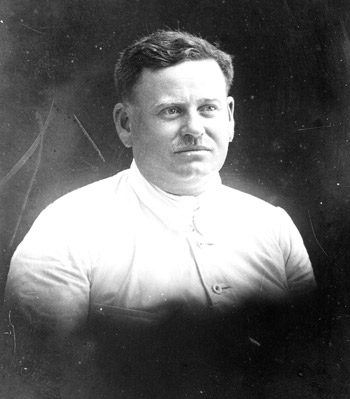
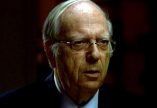
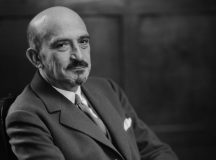
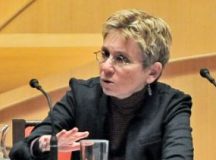

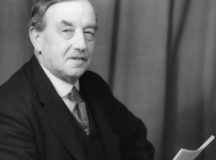































Comments are closed.